What’s in a name?
Our apartment is a ten minute walk from two different metro stations. This was a major selling point as we were deciding where to live in Lisbon. The metro is our most frequently used mode of transportation. It gets us to within a short walk of almost everywhere we need to go.
One of the stations is named, like most of them, for its location. It’s “Roma” – for Avenida de Roma, the street running atop the metro line. The name of the other station, “Entrecampos”, never quite made sense to us. The station is underneath Avenida República. Maybe it had something to do with the large park, Campo Grande, just to the north. Or the Campo Pequeno square to the south.
But we never really gave it much thought. It was a name. A label. A point of departure when we were going somewhere and an arrival point when we returned.
Then one day we were talking with a Portuguese friend who used the word entre and said it meant “between”.
A light bulb went off.
Entrecampos. Entre campos. Between the campos (fields). Which makes perfect sense, because just north of the station is Campo Grande (the big field), one of the largest city parks in Lisbon. And a few blocks south is Campo Pequeno (the little field), a city block-sized park with an event venue and shopping center.
We visit both campos regularly, for very different reasons, but had never looked into their respective stories. Today we want to tell you a little about the little field – Campo Pequeno. In an upcoming post we’ll talk about Campo Grande.
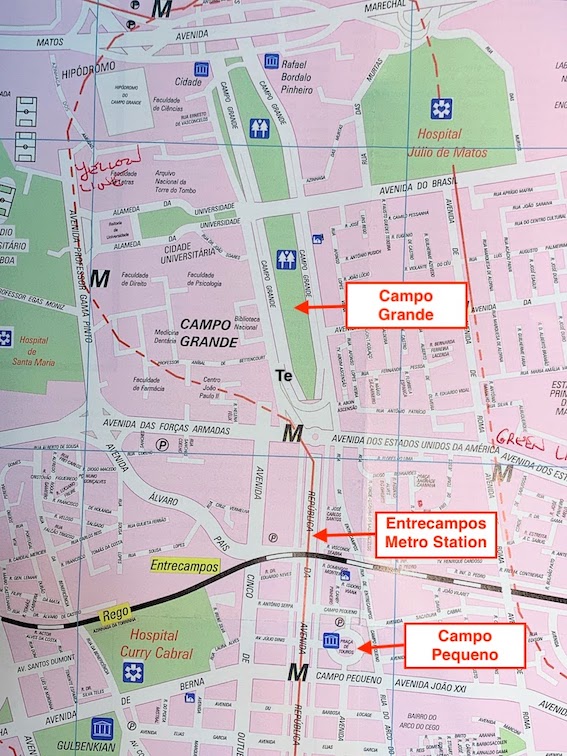
A brief history of Campo Pequeno
In the late 1800’s, Lisbon was growing and needed more space. The city government developed a plan to expand northward into a sparsely populated rural area. This new part of the city would be known as Avenidas Novas, or New Avenues. The design featured wide streets connecting commercial and residential developments to accommodate the growing population.
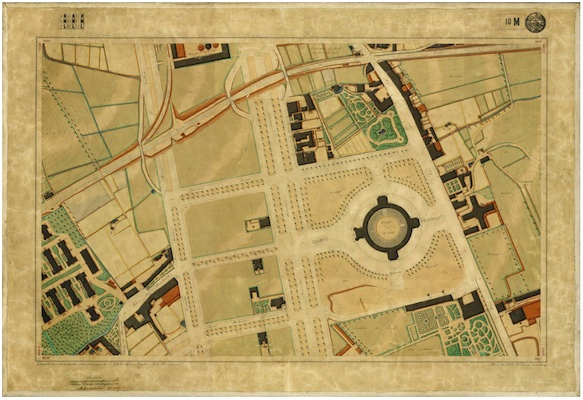
Campo Pequeno square.
Image source: Conservar Património
The plan included space for a new bullring, to replace the one at Praça Santana (the site now known as the Field of the Martyrs to the Fatherland, that we wrote about in our last post).
The Praça de Touros do Campo Pequeno, or Campo Pequeno Bullring, was opened in 1892. It was loosely modeled after another bullring in Madrid and was built in a “Neo-arabic revivalist” style that featured large cupolas on top of the four major towers in the structure.
Bullfights and more
Throughout most of the 20th Century, and continuing today, Campo Pequeno has been the focal point for bullfighting in Lisbon.
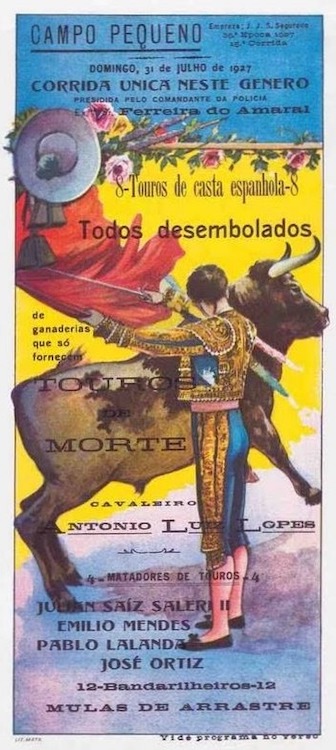
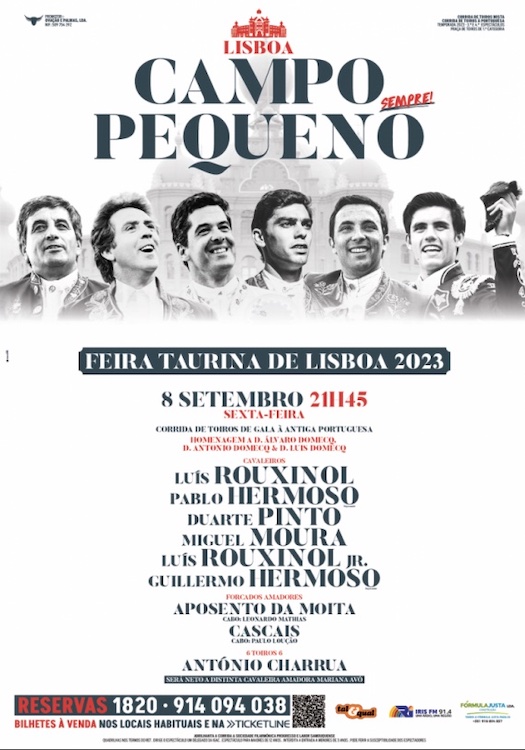
Posters promoting bullfights from 1927 (left) and 2023 (right).
Image sources: 1927 – Restos de Colecção, 2023 – campopequeno.com
Portugal is one of only eight countries in the world where bullfighting still takes place. (The others are France and Spain in Europe, and Mexico, Colombia, Venezuela, Peru, and Ecuador in Central / South America.)
Portuguese bullfighting differs from that of Spain in that the bulls are not killed in front of the audience. Injured bulls may be killed by a butcher backstage. Some bulls are restored to health, but we don’t know if they ever return to the bullring.
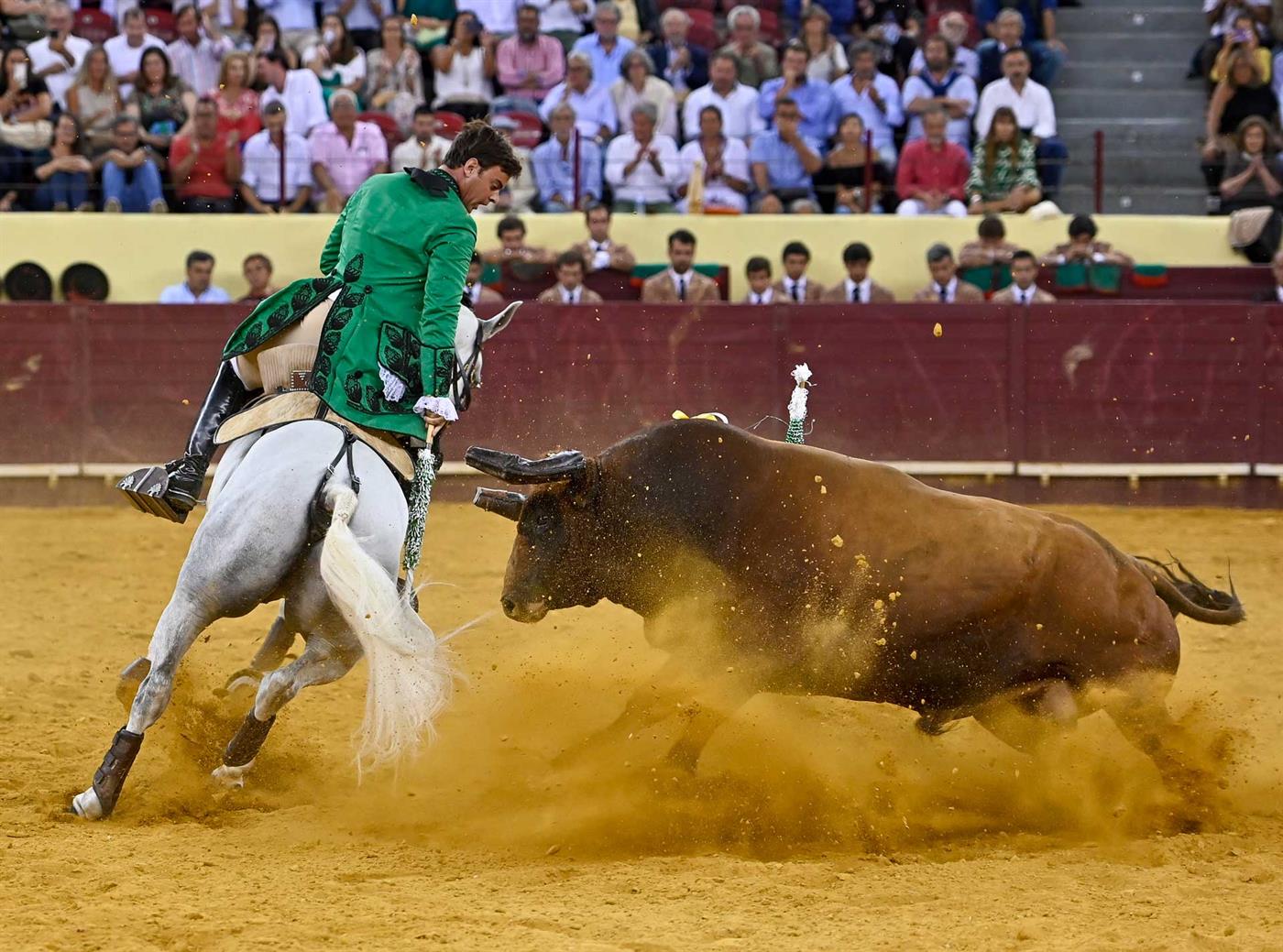
Image source: Diário de Noticias
The arena was also used for other kinds of activities, notably political rallies. In the years following the “Carnation Revolution” of April 25, 1974, Campo Pequeno became one of the major venues where new and established political parties held rallies. There were 8,200 seats in the stands, but many more people would crowd in. And often the floor of the arena would be full of energetic partisans.
But bullfighting and politics were not always separate. Paulo Pereira, the former public relations manager for Campo Pequeno, told Publico in 2017 that “Politics has always been projected within Campo Pequeno.”
Pereira recalled that in 1936, in the early years of the Estado Novo (the “New State” – the dictatorship of Antonio Salazar), one rally led to the formation ofthe Portuguese Legion, a right wing paramilitary organization loyal to Salazar. In 1949, a bullfight was held in honor of the Spanish head of state, Francisco Franco. And in the 1950’s, Haile Salassie, the emperor of Ethiopia, also visited Campo Pequeno.
Campo Pequeno today
The arena was nearly abandoned by the 1990’s. By 2000, the building was in a severe state of disrepair and was closed due to safety concerns.. From 2000 to 2006 a major renovation took place that included adding a retractable roof to allow the venue to be used for indoor activities, like concerts. Restaurants and bars line the outer ring of the ground floor. Most have outdoor seating.
Bullfights are still an attraction at Campo Pequeno, with most of the activity happening from late spring until late summer. But concerts and other events now outnumber the “bull races”.
A large excavation around the base of the building created space for an underground shopping center and a parking garage that holds 1,200 cars.
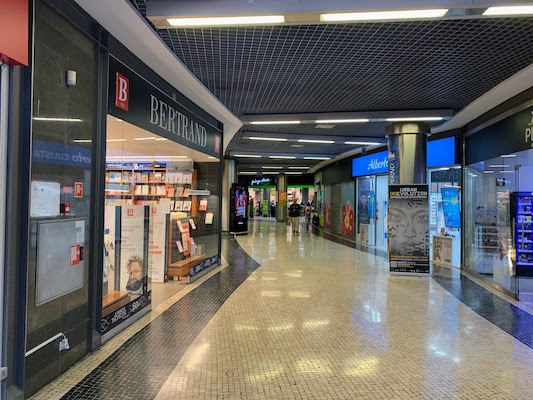
It’s just part of our neighborhood
Campo Pequeno is hard to miss. Its size and unique architecture make it stand out in the urban landscape. But, for us, it’s just another part of the neighborhood.
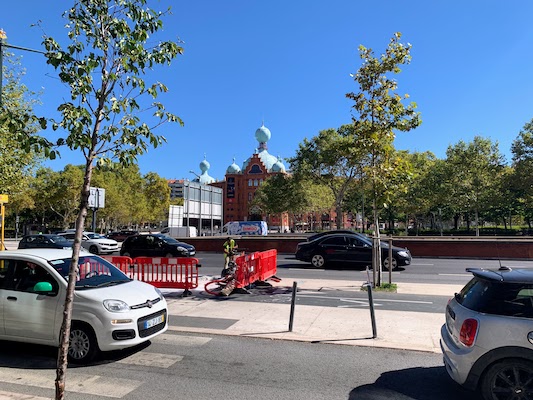
We’ve never attended a bullfight, and probably never will. It’s part of Portuguese culture, but not something we want to see.
And at the risk of appearing completely out of touch, we’ve not seen a concert advertised that appealed to us. (Or that featured an artist we’d even heard of. Yikes! We’re old!)
We do some grocery shopping in the underground center and we enjoy walking around the square. There’s a farmers’ market beside the arena on Saturday mornings and the playground is usually full of energetic kids.
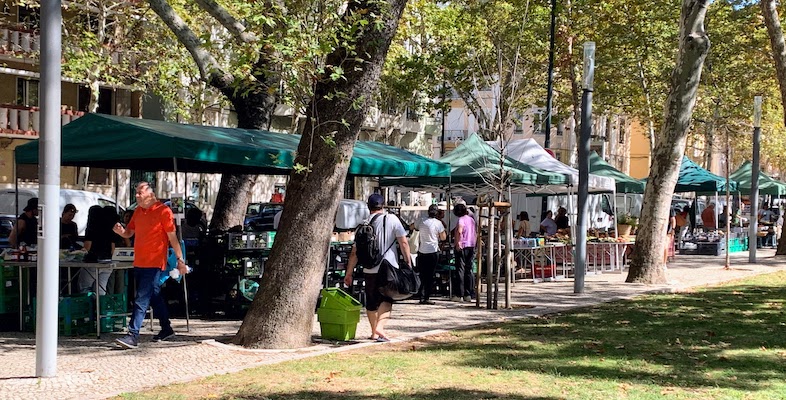
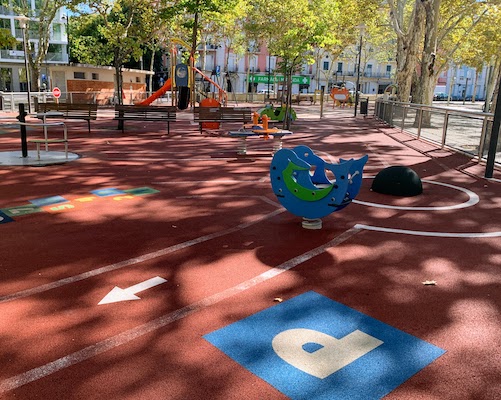
Best of all, across the street is one of our favorite outdoor cafés, where we often enjoy a glass of wine on a warm summer evening.
In our next post, we’ll go to the other end of Avenida República and take you on a tour of Campo Grande.
Until next time / Até a próxima vez
Mary and Mike
The Cook and The Writer
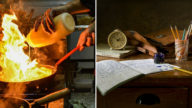
What unique architectural gems are in your neighborhood? Give us your report with a note in the comments below or via the Contact Us form.
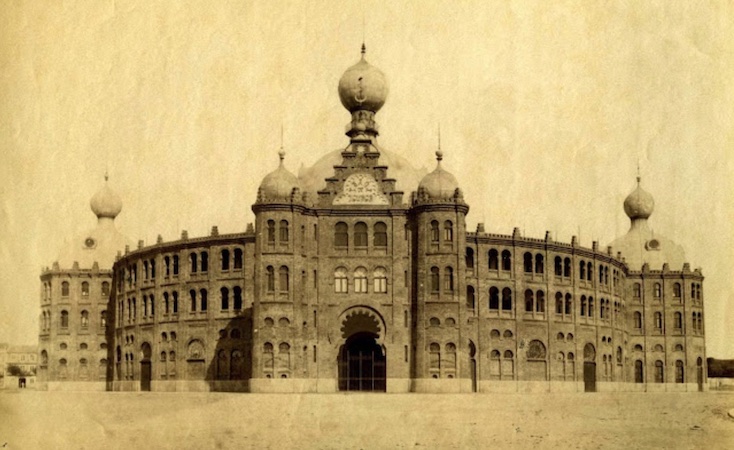
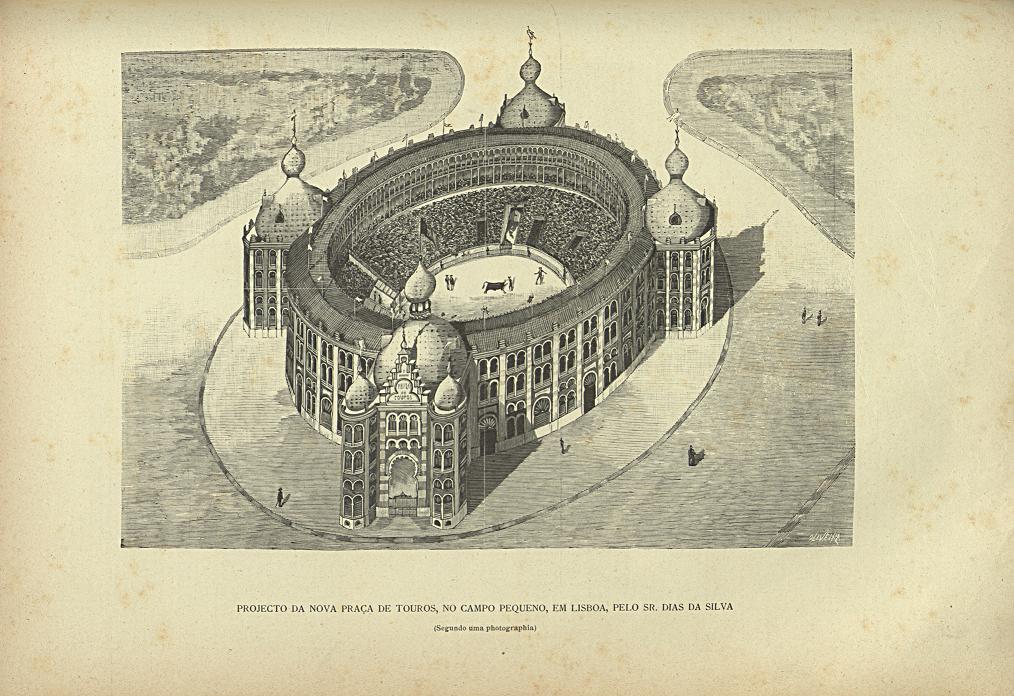
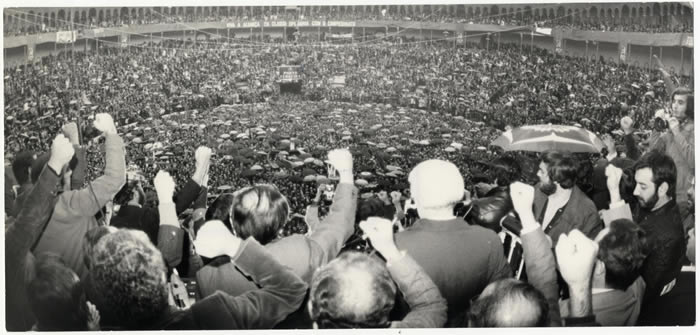
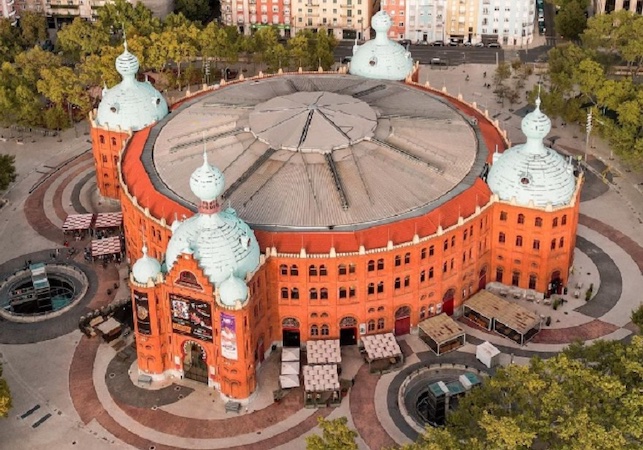
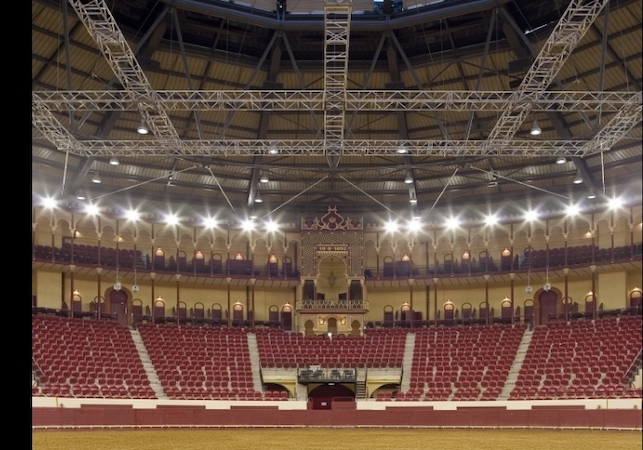

Hi, Coming late to the party yet we are moving to Campo Pequeno this July. What is the name of one of your favorite outdoor cafés, where we often enjoy a glass of wine on a warm summer evening that you reference in this post.
Thank you for the history research you did on this piece. We live right by Campo Pequeno and frequent Pingo Doce regularly, but never knew its history. We have attended a concert there and it was lively and very fun, filled with lovely Portuguese music lovers as well as expats. I can’t wait to hear about Campo Grande because it’s a beautiful park that is always a pleasure to stroll through.
Looks like you live in a great area for so many things. Especially if you don’t have a car. I don’t remember if we saw the parks when we visited, but I remember the bull fight we saw. I remember not liking it when the bull got bloody. Can’t see the point. At least the matador wasn’t gorged. Enjoy exploring in the fall weather.
Wow that’s a great history of that park. Hope you are enjoying the sunshine. It’s gorgeous here as well, but thankfully not that hot!
Thanks for filling in the gaps in my knowledge of this part of our wonderful Avenidas Novas parish and the Campo Pequeno! I’ve heard the bull races are very different here so probably will want to go see one at some point . . .
David